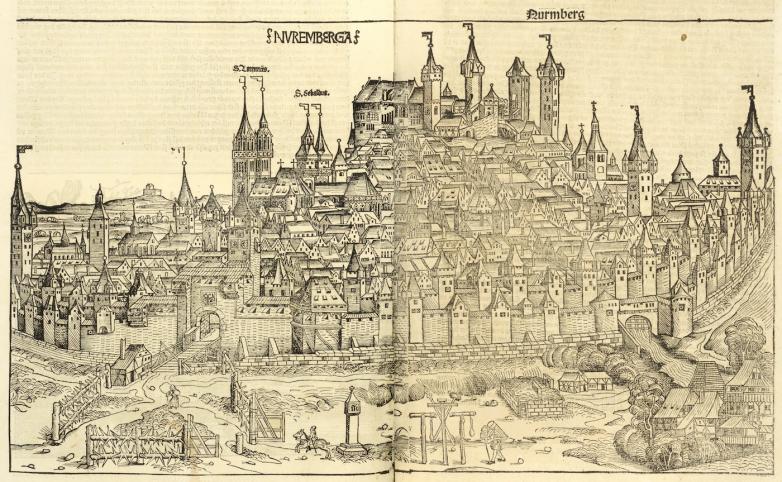Bonhams to Feature the Library of Roman Vishniac

The Nuremberg Chronicle by Hartmann Schedel, a German-language first edition. Estimate: $60,000-90,000
New York – On April 12 in New York, Bonhams Fine Books & Manuscripts sale will feature the collection of the photographer Roman Vishniac (1897-1990), who famously documented pre-World War II Jewish communities throughout Europe. Born to a Russian-Jewish family, Vishniac fled Russia in the face of rising anti-Semitism in 1918, landing in Germany a few years before the Nazi rise to power. His intimate and haunting photographs of Jewish neighborhoods on the eve of the war were published after the war as part of Vanished World: Jewish Cities, Jewish People in 1947, which propelled him to fame. Vishniac’s overwhelming identification with exiled communities fostered in him a compelling drive to collect and preserve culture and information in the form of rare books and manuscripts, an extension of the photographs that made him known.
Vishniac began taking photographs at the age of 7 and was a pioneer in the field of photomicroscopy—the science of capturing images through a microscope. Both a scientist and a scholar, he possessed a wide-ranging intellect which is reflected in his library with highlights in early illustrated books in science, medicine, cosmography, astronomy, Judaica, Americana and alchemy, among other interests. The sale features 174 lots selected from his incredible library. Highlights include:
A German language, first edition of The Nuremberg Chronicle by Hartmann Schedel (1440-1514). One of the most extensively illustrated books of the 15th century, the work is an encyclopedia of historical accounts and is estimated at $60,000 – 90,000.
Micrographia: or some Physiological Descriptions of Minute Bodies made by Magnifying Glasses by Robert Hooke (1635-1703). A first edition of Hooke’s most celebrated work and the most influential work in the history of microscopy, it is estimated at $15,000 – 25,000.
First edition of the first exhaustive lunar atlas, Selenographia: sive Lunae descriptio; atque Accurata, Tam Macularum eius, addita est, lentes expoliendi nova ratio, by Johannes Hevelius (1611-1687). It is estimated at $10,000 - $15,000.















